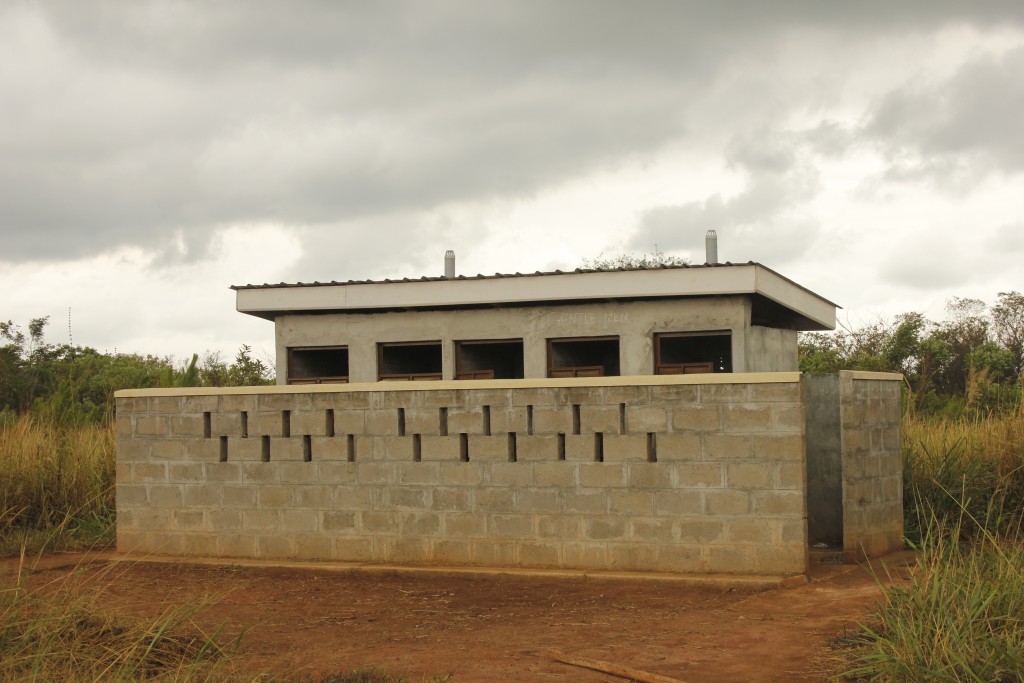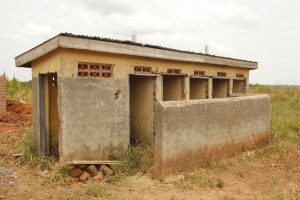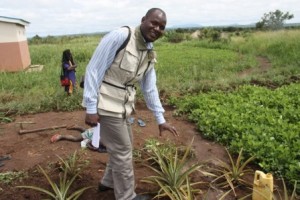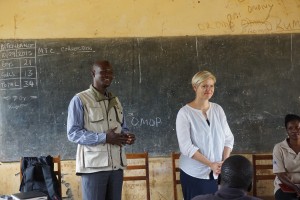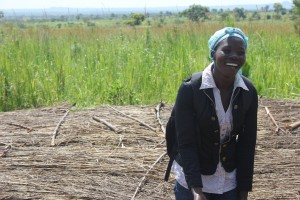School Enterprise Challenge Comes To Amuru District
April 28, 2016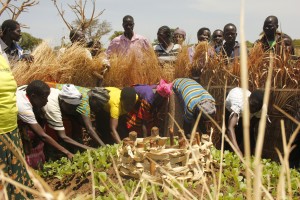 15 of African Revival’s partner schools in Northern Uganda have registered for the Teach a Man to Fish School Enterprise Challenge. To take part in the challenge, African Revival’s Pupil Farmer Clubs develop and submit a business plan and get feedback, before launching their idea at school!
15 of African Revival’s partner schools in Northern Uganda have registered for the Teach a Man to Fish School Enterprise Challenge. To take part in the challenge, African Revival’s Pupil Farmer Clubs develop and submit a business plan and get feedback, before launching their idea at school!
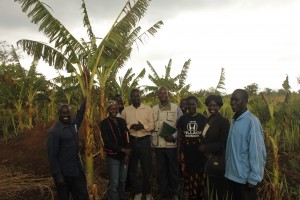 We will give them lots of support as they design and set up their school businesses growing and selling produce. The challenge is a fun way for pupils to learn practical transferable skills in farming and business – as well as raise some income for their school!
We will give them lots of support as they design and set up their school businesses growing and selling produce. The challenge is a fun way for pupils to learn practical transferable skills in farming and business – as well as raise some income for their school!
Meet Vincent!
April 28, 2016 “My role as Construction Coordinator at African Revival involves designing and costing new structures. I do the process of tendering, acquiring the contractors, taking them through the sites, supervising the work, checking quality, following up the payment process, and liaising with the District Government.”
“My role as Construction Coordinator at African Revival involves designing and costing new structures. I do the process of tendering, acquiring the contractors, taking them through the sites, supervising the work, checking quality, following up the payment process, and liaising with the District Government.”
“I enjoy the design side of my job and I prefer working with community schools. At Government schools you work with existing designs approved by the Ministry of Education. But at community schools, you come up with your own design, present it to management, present it to the District Government, and when you come out successfully at the end, you feel good about it.”
Our construction plans for the next 3 months include:
- Raising funds for a classroom block, classroom refurbishment and teacher accommodation at Anaka P7 Primary School
- Raising funds for teacher accommodation at Juba Road Primary School
Want to know more? Get in touch! 020 8939 3190|info@africanrevival.org
Posted in News | Leave a comment750 Children Catch Up On School
April 28, 2016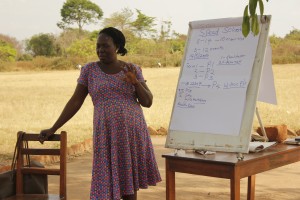 Last month, we launched our new Speed Schools programme with new partner, Geneva Global. Speed Schools is an accelerated learning programme for children who have missed out on a lot of schooling. In just 10 months, we will take 750 children through the curriculum they have missed during the first three years of primary school! This means that by the start of the next academic year (February 2017), they will be able to join Year 4 of mainstream primary school.
Last month, we launched our new Speed Schools programme with new partner, Geneva Global. Speed Schools is an accelerated learning programme for children who have missed out on a lot of schooling. In just 10 months, we will take 750 children through the curriculum they have missed during the first three years of primary school! This means that by the start of the next academic year (February 2017), they will be able to join Year 4 of mainstream primary school.
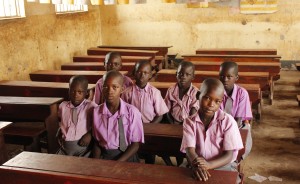 In May, we’ll be taking a closer look at the programme with updates, interviews and articles. Watch this space for an introduction to our two new Speed Schools staff, Phillip and Lucy, and hear more from the children and parents involved!
In May, we’ll be taking a closer look at the programme with updates, interviews and articles. Watch this space for an introduction to our two new Speed Schools staff, Phillip and Lucy, and hear more from the children and parents involved!
How well-designed classrooms contribute to a quality education!
April 13, 2016The classroom environment can improve students’ academic performance by 25% according to a recent study conducted by the University of Salford.
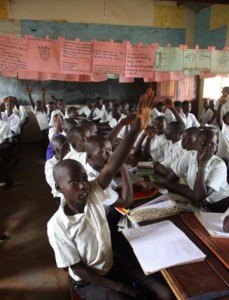 Over the last 10 years, African Revival has been working to improve the quality of teaching and learning at primary schools in Uganda and Zambia. We also provide facilities which improve access to education and are conducive to learning. Schools in northern Uganda were targeted by rebel forces during the 20 year insurgency by the Lord’s Resistance Army. School infrastructure was destroyed and many children missed out on access to education. In the decade since peace was restored, we’ve learnt a thing or two about classroom construction.
Over the last 10 years, African Revival has been working to improve the quality of teaching and learning at primary schools in Uganda and Zambia. We also provide facilities which improve access to education and are conducive to learning. Schools in northern Uganda were targeted by rebel forces during the 20 year insurgency by the Lord’s Resistance Army. School infrastructure was destroyed and many children missed out on access to education. In the decade since peace was restored, we’ve learnt a thing or two about classroom construction.
Vincent Komakech, based at our Gulu office in Uganda, has been African Revival’s Construction Project Coordinator for 3 years. Vincent has given us his expert opinion on the design of quality classrooms suited to the local environment.
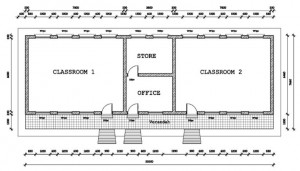 Orientation
Orientation
Firstly, orientation of the building is key. Typically, classrooms are a long oblong shape with windows running along the two longer walls. Building a classroom so that the two windowless walls face East and West means that no direct sunlight will penetrate the windows. This avoids the distraction of sunlight in pupils’ and teachers’ eyes at the beginning and end of the day as the sun rises and sets.
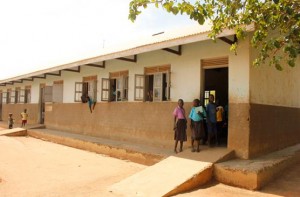 Durability and Insulation
Durability and Insulation
Secondly, the materials used to build and roof a classroom should be durable and strong enough to withstand wear and tear over time. Classrooms are built to last approximately 30-40 years, but ideally longer before having to be repaired or replaced. Depending on the individual school, classrooms need to hold anything between 30 to 90 students at one time so buildings also need to be a substantial size.
Some government funded secondary schools are built with insulation to reflect heat away from the building, helping to keep it cooler and more conducive to learning. Adding extra layers of plaster to the roof can also muffle the sound of heavy rains which fall between April and September. Unfortunately, such insulation is not used in the construction of most primary school classrooms often due to budget constraints. This makes teaching and learning effectively that much harder in the rainy season.
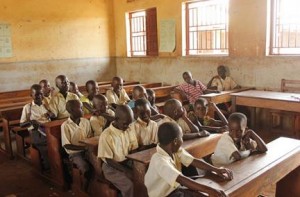 Light and Ventilation
Light and Ventilation
Ideally, windows should be large enough to allow adequate ventilation and light. With no access to electricity being the norm at most of the schools we work with, natural daylight is used as essential lighting in classrooms. Air should also be able to flow in and out allowing for a breeze to pass through the classrooms, so windows are purposefully not fitted with glass. Temperatures in northern Uganda can regularly reach over 30 degrees Celsius in the dry season, so a breeze is keenly welcomed by pupils and teachers!
 Windows Where possible, windows should be lined with insect-proof screens, similar to mosquito nets but more solid and durable. These not only prevent small insects from using the classroom as a home, but also birds and bats which may leave behind unwanted debris and smells. Small animals may also damage the roofing meaning that is has to be replaced sooner. Using these screens prevents damage caused by animals, making the classrooms more durable in the long term. Windows should also be placed high enough in the wall so that when a student is sat at a desk they cannot be distracted by what is going on outside. Simple ideas such as this can help improve the focus and concentration of students in class.
Windows Where possible, windows should be lined with insect-proof screens, similar to mosquito nets but more solid and durable. These not only prevent small insects from using the classroom as a home, but also birds and bats which may leave behind unwanted debris and smells. Small animals may also damage the roofing meaning that is has to be replaced sooner. Using these screens prevents damage caused by animals, making the classrooms more durable in the long term. Windows should also be placed high enough in the wall so that when a student is sat at a desk they cannot be distracted by what is going on outside. Simple ideas such as this can help improve the focus and concentration of students in class.
 Walls and Floors
Walls and Floors
Finally, walls and floors should be easy to clean so that a hygienic and attractive environment is maintained. Vincent describes “walls that talk to the learning students” by which he means wall surfaces which teachers can decorate with posters, slogans and pictures. Doors with a strong lock should also be installed so that classrooms and their contents are secure when not in use.
“These are some of the features that I think are worth considering for a good classroom… If you have good classrooms with some of the features I’ve suggested, I’d like to think concentration levels would go up for the learners. The teachers will not have interferences with their lessons. That means the contact hours that are planned for each syllabus should be accomplished in time. It can provide room for revision, and remedial lessons. Most of the syllabus can be finished by say, the beginning of the third term, and you have time for remedial lessons and revision, then definitely the performance of the students should improve.”
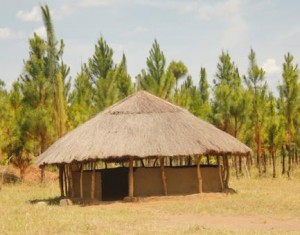 Many of Vincent’s recommendations are included in the design given to government-supported schools by the Ugandan Ministry of Education. However, many rural primary schools are not given any funding or support from the government. This means that their budgets for classrooms are very limited. Often classrooms will be in the form of round mud brick huts with thatched roofs. These classrooms tend to be paid for and built by parents, the PTA and School Management Committees. These buildings need constant maintenance and are likely to leak in heavy rains which makes teaching and learning more difficult.
Many of Vincent’s recommendations are included in the design given to government-supported schools by the Ugandan Ministry of Education. However, many rural primary schools are not given any funding or support from the government. This means that their budgets for classrooms are very limited. Often classrooms will be in the form of round mud brick huts with thatched roofs. These classrooms tend to be paid for and built by parents, the PTA and School Management Committees. These buildings need constant maintenance and are likely to leak in heavy rains which makes teaching and learning more difficult.
Over the last 3 years African Revival has supported 57 schools in Uganda & Zambia in a variety of ways. In terms of construction work we have built 4 classrooms, 2 teachers’ houses, 4 toilet blocks, 1 girl’s dormitory and refurbished a library. We hope that with the generous support of our donors we will be able to provide more quality classrooms and other school buildings to schools which are seriously lacking in facilities. Some schools have such high enrolment rates that there may be over 90 students in a classroom built for just 45. With more well-designed classrooms, schools can provide more students with a quality education.
If you’d like to contribute to the construction of a classroom, or another school building, please do get in touch on 020 8939 3190 or info@africanrevival.org
Posted in News | Leave a comment
The Toilet Question
April 13, 2016Everything you ever wanted to know about latrines but didn’t want to ask
What’s the difference between a toilet and a latrine?
A latrine is a type of toilet. The term latrine is usually used to describe something simpler and more basic than a flushing toilet.
Are there different types of latrines?
The most common type of latrine is a pit latrine. A pit latrine usually consists of a deep hole in the ground (the pit), a concrete slab for the floor with a small hole that leads down to the pit, and a shelter. Pit latrines are built away from residences and away from water sources, to avoid contamination.
 A drainable latrine is a pit latrine that can be emptied. The walls of the pit are lined with brick or cement and the pit is part-filled with water. A pipe leads from outside the latrine to inside the pit. A cesspit emptier can connect to this pipe to drain the waste. With a drainable latrine, it is important to only drop materials into the pit that can decompose. Other materials will block the pipe.
A drainable latrine is a pit latrine that can be emptied. The walls of the pit are lined with brick or cement and the pit is part-filled with water. A pipe leads from outside the latrine to inside the pit. A cesspit emptier can connect to this pipe to drain the waste. With a drainable latrine, it is important to only drop materials into the pit that can decompose. Other materials will block the pipe.
An eco latrine enables human waste to be used as fertiliser. It separates solid human waste (faeces) and liquid waste (urine). The solid waste is collected in a pit where it dries and decomposes. The drying process kills pathogens, leaving it safe to use to improve soil. Meanwhile urine is collected separately and can be used in the creation of fertiliser. This kind of latrine is also called a urine-diverting dry toilet.
Which type of latrine is the best?
Flushing toilets are dependent on the availability of water. Latrines are cheaper to construct and can be used even during water shortages. But each type of latrine has its advantages and disadvantages.
 Pit latrines are the cheapest and easiest to construct. But a 5-cubicle pit latrine block at a primary school in Northern Uganda might fill up after 2 years. After this time, the school will need to bury the old pit and dig a new pit and construct a new shelter.
Pit latrines are the cheapest and easiest to construct. But a 5-cubicle pit latrine block at a primary school in Northern Uganda might fill up after 2 years. After this time, the school will need to bury the old pit and dig a new pit and construct a new shelter.
Drainable latrines are more expensive to build but last longer. A drainable latrine at a primary school may need to be emptied after 2 years. But as long as the walls are well built, the structure could last over 15 years until any major maintenance is needed. The school also needs to make sure pupils understand what they can and cannot drop into the pit.
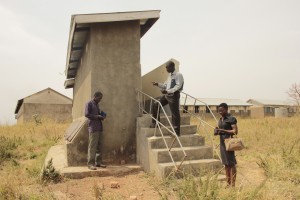 Eco latrines are the most sustainable as they allow the waste to be turned into something useful. But eco latrines are still a relatively new idea. School communities need to get used to the idea of reusing human waste before they can begin to use them. When visiting primary schools in Northern Uganda, African Revival’s Construction Coordinator recommends drainable latrines or eco latrines. They last longer, they are safer, and they are more space efficient.
Eco latrines are the most sustainable as they allow the waste to be turned into something useful. But eco latrines are still a relatively new idea. School communities need to get used to the idea of reusing human waste before they can begin to use them. When visiting primary schools in Northern Uganda, African Revival’s Construction Coordinator recommends drainable latrines or eco latrines. They last longer, they are safer, and they are more space efficient.
Which type of latrine is the most popular in Northern Uganda?
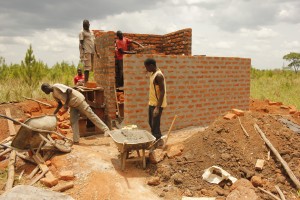 Pit latrines are the most popular in Northern Uganda. In rural areas, community members can dig a pit, place logs over the pit to act as the floor, and construct a shelter with mud and a grass thatch roof – all traditional and locally available materials.
Pit latrines are the most popular in Northern Uganda. In rural areas, community members can dig a pit, place logs over the pit to act as the floor, and construct a shelter with mud and a grass thatch roof – all traditional and locally available materials.
How much does it cost to build a latrine?
A 5-cubicle pit latrine block with brick walls costs around £3,000. A 5-cubicle drainable latrine block costs a little over £5,000.
What is improved sanitation?
 Improved sanitation facilities ensure a hygienic separation of human waste from human contact. Pit latrines with a slab for the floor, drainable latrines, eco latrines, and flushing toilets all count as improved sanitation facilities.
Improved sanitation facilities ensure a hygienic separation of human waste from human contact. Pit latrines with a slab for the floor, drainable latrines, eco latrines, and flushing toilets all count as improved sanitation facilities.
2.4 billion people worldwide do not have access to improved sanitation (WHO 2015). This means they use latrine facilities that do not hygienically separate human waste from human contact. This includes public latrine facilities, pit latrines without a slab for the floor, or they practice open defecation.
What is open defecation?
Open defecation is the practice of going to the toilet outside, for example in fields, forests, sewers, bushes, or bodies of water, rather than in a designated toilet. Almost 1 billion people worldwide practice open defecation (WHO 2015).
When open defecation is practiced in a densely populated area, it becomes a major public health issue. Open defecation can spread diseases such as diarrhoea, intestinal worms, typhoid and cholera. It can also pollute water sources and lead to the spread of waterborne diseases.
Do you have a question about what we do or a topic you would like us to cover?
Message us on Facebook, tweet us, leave a comment on this news update, or email us here.
Source: WHO (2015) http://www.who.int/mediacentre/factsheets/fs392/en/
Posted in News | Leave a comment
We’re recruiting for a volunteer!
April 11, 2016We are looking for a passionate, motivated and enthusiastic volunteer to come into the UK office for 2-3 days a week and assist on a variety of fundraising and communications based tasks. We are happy to be flexible according to your interests and what you would like to achieve by volunteering with us. Responsibilities range from:
- Researching and identifying potential donors and sources of funding
- Writing funding proposals
- Transcribing interviews with project staff and beneficiaries (including students, teachers and parents)
- Writing articles and reports to update stakeholders on project progress
- Writing and scheduling social media posts
- Assisting with the planning and delivery of fundraising events
- Developing the trust and corporate databases
- Providing administrative support to the office
For more information, please read the full role description here: Fundraising and Communications Volunteer
To apply, please submit a CV and covering letter outlining your relevant skills/experience and why you would like to volunteer with African Revival, to Emily Brewster at emily.brewster@africanrevival.org.
Please note, all our voluntary positions are UK based, unless stated otherwise in the role title e.g. Fundraising & Communications Volunteer (Uganda)
Posted in News | Leave a commentLatrines completed at Teddi Community School
April 6, 2016Teddi Community School is a parent-run primary school. Parents set it up and pay about £6 per pupil per term to cover teachers’ salaries, books, and all other school costs. The school gets no funding from the Government.
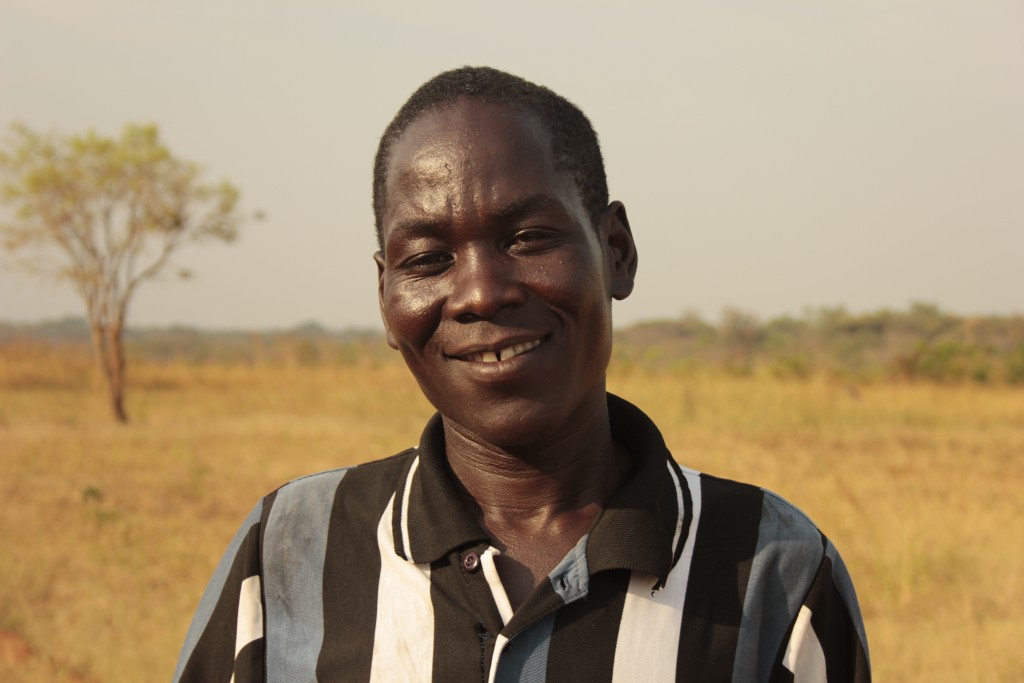 “We are a community school and sometimes parents pay late. But we don’t mind. We don’t do this for the money. We volunteer so our community can be sustainable and so our children can have a future.”
“We are a community school and sometimes parents pay late. But we don’t mind. We don’t do this for the money. We volunteer so our community can be sustainable and so our children can have a future.”
– Head Teacher at Teddi Community School
We helped Teddi set up a School Demonstration Garden in February 2015. This is where parents learn new agricultural techniques to help them with their farming at home. Parents contribute around 30% of the profits they make from the garden to the school. We also helped Teddi set up a Village Savings and Loans Association, which helps parents save a small amount of money each week. Both the School Demonstration Garden and the Village Savings and Loans Association help generate additional income for the school.
As a community school, parents give as much as they can to ensure the school performs well and has suitable infrastructure and resources. When African Revival’s Construction Coordinator visited Teddi at the start of this year, he found 217 girls at the school were sharing two latrines cubicles. This overcrowding results in unhygienic facilities, long queues for the toilet, and missed lesson time.
Parents at the school said they would work on the construction if African Revival could help them with bricks, cement, and skilled labour. After seeing the commitment of the parents, we agreed to fund a new drainable latrine block.
– Parents contribute to the construction
This week, with the help of the parents, we finished a new two-cubicle latrine block. Because this latrine block is drainable, meaning it can be emptied, it will last at least 10 years – 8 years longer than a pit latrine!
Thank you to Bloomberg who funded this latrine block!
Posted in News | Leave a comment
Bye Francis and Babra!
April 1, 2016Today it is with sadness that we say goodbye to two of our Livelihoods staff: Francis and Babra.
Francis joined African Revival in 2012, after working with as an agricultural extension officer with many NGOs in the region, including the Norwegian Refugee Council. He holds a diploma in Agriculture from Bukalasa Agricultural College, as well as a BSC in Organic Agriculture from Uganda Matrys University.
During his time working for African Revival, Francis has made a positive and lasting impact. He successfully implemented the Community Empowerment Project in Nwoya district, helping to empower local communities through education and agriculture. Furthermore, for the last year in Amuru district, Francis has been using his extensive agricultural knowledge to help communities innovate their farming activities and learn marketing techniques to transform their farms into profitable enterprises. In this capacity, he has been a brilliant manager and mentor to Babra, Bosco and Patrick. Moreover, Francis has been a friendly and lively presence in the Gulu office, and is always a pleasure to work with. We wish him the best of luck in all his future endeavours, and have no doubt that he will go on to do great things in his new job in the Local Government Agriculture department.
Babra
 After roles with the International Institute of Rural Reconstruction and Action Against Hunger, Babra joined African Revival in January 2012 as an Agricultural Extension Worker, before being promoted to Agricultural Project Officer.
After roles with the International Institute of Rural Reconstruction and Action Against Hunger, Babra joined African Revival in January 2012 as an Agricultural Extension Worker, before being promoted to Agricultural Project Officer.
During her time with African Revival, Babra has earned a reputation for building excellent relationship with the community. In her role implementing the School Demonstration Garden project in Amuru district, she has trained beneficiaries on good agricultural practices, Village Loans and Savings Association (VSLA) and business skills. Under her guidance, the parents’ groups diversified their crops, modernised their farming techniques and earned a considerable profit at market. Indeed, her extensive agricultural knowledge, excellent teaching style and vibrant, warm personality has made her hugely popular with both the AR staff and communities she works with. Babra will be sorely missed by all the African Revival staff in the UK and Uganda. We wish her the best of luck in her future career and are certain she will be successful in whatever she chooses to pursue.
Posted in News | Leave a commentGoodbye Colleen!
March 30, 2016 Today we are very sad to say goodbye to our wonderful CEO Colleen Yuen. Colleen joined African Revival in August 2014 after having previously led multiple programmes for Article 25 in Africa, Haiti and Sri Lanka. She was also Country Director at Build It International in Zambia before joining us, and remains a qualified architect, with more than 10 years’ experience in the education sector, designing children’s centres, primary and secondary schools.
Today we are very sad to say goodbye to our wonderful CEO Colleen Yuen. Colleen joined African Revival in August 2014 after having previously led multiple programmes for Article 25 in Africa, Haiti and Sri Lanka. She was also Country Director at Build It International in Zambia before joining us, and remains a qualified architect, with more than 10 years’ experience in the education sector, designing children’s centres, primary and secondary schools.
Colleen has split her time over the last two years between our offices in the UK, Uganda and Zambia, closely working with the team in each country and getting to know all of AR’s programmes and schools like the back of her hand. She has done a fantastic job modernising the organisation and leading it the successful high-impact charity we are today.
We have no doubt that she will continue to do brilliant things in her next role and wish her all the best – we’ll miss you Colleen!
Here are some of our favourite Colleen moments:
Posing with the programmes team in Gulu…
Helping to raise an incredible sum for our first ever nursery education programme…
Getting her hands dirty on our School Garden programme…
Receiving a certificate of excellent for AR’s work in northern Uganda….
Meeting some of the children we’re supporting….
Posted in News | Leave a comment

